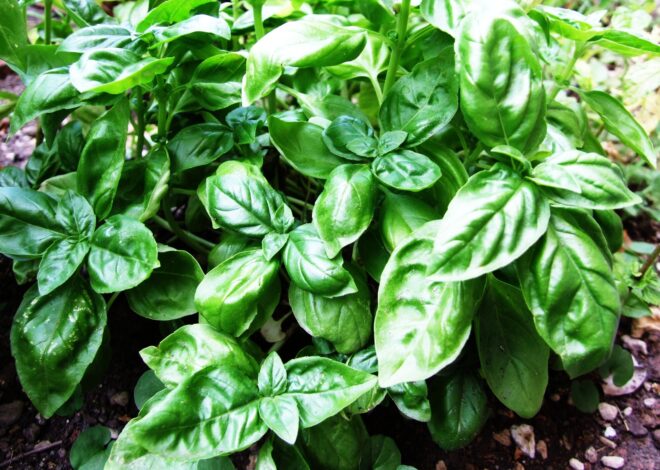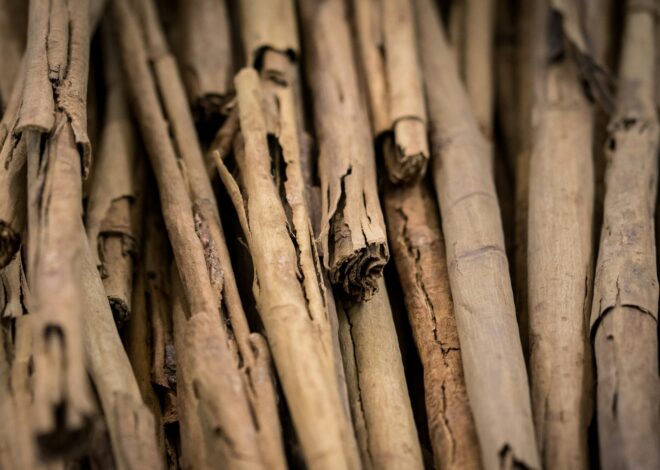
How To Make Frontier Penicillin
Whether you’re preparing for emergencies or simply curious about herbal remedies, learning how to make Frontier Penicillin can open doors to a whole new realm of wellness. In a world where modern medicine reigns supreme, the idea of brewing your own antibiotics may seem like something out of an old western film.
Yet, Frontier Penicillin brings this concept to life—an ancient remedy that harkens back to our ancestors’ resourcefulness in times of need. Imagine being able to harness nature’s power right from your backyard or kitchen!
With knowledge passed down through generations, making Frontier Penicillin is not just about survival; it’s about reclaiming control over our health. Dive into the rich history and practical steps involved in crafting this remarkable antibiotic alternative.
Who knows? You might find yourself embracing a lost art that has stood the test of time!
What is Frontier Penicillin?
Frontier Penicillin is a natural remedy derived from mold that has been used historically to combat infections. It’s named for its roots in early American frontier life, where settlers relied on available resources to treat ailments.
This homemade antibiotic mimics the properties of commercial penicillin but comes with a unique twist. Instead of relying on pharmaceutical production, it taps into the power of nature’s fungi—specifically, molds like Penicillium chrysogenum.
Though not a substitute for modern medicine in severe cases, Frontier Penicillin showcases human ingenuity and adaptability. Many believe it can provide relief from minor infections when conventional options are limited or unavailable.
As interest in herbal remedies grows, understanding this age-old practice connects us to our past while offering potential solutions for present-day challenges.
The History of Frontier Penicillin
Frontier Penicillin has roots that trace back to the early 20th century. It emerged during a time when antibiotics were revolutionizing medicine. This specific type of penicillin, derived from natural sources, became particularly significant in remote areas.
During World War II, soldiers faced numerous infections without access to modern medical supplies. Innovative minds began exploring ways to create effective treatments using what they had on hand. Frontier Penicillin was born out of necessity and ingenuity.
The process involved utilizing mold found in various environments—often discovered accidentally by resourceful individuals. These pioneers were driven by desperation yet showcased remarkable creativity in their approach to healthcare amidst scarcity.
As tales of successful home-brewed remedies spread through communities, many adopted these methods for treating ailments. This grassroots movement laid the foundation for understanding how accessible medicines could be produced even in times of crisis or isolation.
The Process of Making Frontier Penicillin
Making Frontier Penicillin is a fascinating journey into natural medicine. It begins with the right environment, requiring clean and sterile conditions to prevent contamination. You start by sourcing mold, typically from bread or fruit that has been left to spoil.
This mold, often penicillium chrysogenum, is your key ingredient. Next comes extraction. Place the mold in a jar filled with distilled water and let it sit for several days. During this time, the mold will release penicillin into the water.
Once you see the distinct greenish color spread through your mixture, it’s time for filtration. Strain out the solid bits of mold using cheesecloth or a fine sieve. What remains is your liquid gold—potentially life-saving medicine waiting to be used responsibly. Each step requires attention to detail and cleanliness for safety and effectiveness.
Ingredients Needed to Make Frontier Penicillin
To make Frontier Penicillin, you’ll need a few key ingredients. The primary one is the mold known as Penicillium notatum. This fungus can often be found in stale bread or overripe fruit. Next, you’ll require some sugar to feed the mold during fermentation.
Brown sugar works well due to its rich mineral content. You’ll also want distilled water for purity and consistency in your brew. Tap water may contain impurities that could affect the final product. A nutrient source like cornmeal or yeast extract will enhance growth and penicillin production.
These provide essential vitamins and minerals needed by the mold. Have a clean container ready for culturing this unique blend. Sterilization is crucial to prevent unwanted bacteria from interfering with your process.
Gathering these items sets the stage for an intriguing experiment into natural medicine!
Step-by-Step Guide to Making Frontier Penicillin
Step 1: Gathering and Preparing the Ingredients
The first step in your journey to making Frontier Penicillin is gathering the right ingredients. This process requires some attention and care.
Start with fresh moldy bread or fruit. Look for areas where greenish-blue mold has developed, as this contains the penicillium fungi needed for brewing your antibiotic tea.
Next, you’ll need distilled water to ensure purity in your concoction. Tap water can introduce unwanted elements that might hinder fermentation.
Additionally, gather a clean container—glass works best—to house your mixture during the brewing phase. You’ll also want cheesecloth or a fine strainer handy for filtration later on.
Prepare a quiet space where you can work undisturbed. The environment plays an essential role in ensuring successful growth of the mold throughout this process. With everything ready at hand, you’re now set to move forward into the next exciting stage!
Step 2: Brewing the Antibiotic Tea
Brewing the antibiotic tea is an essential step in creating Frontier Penicillin. Start by heating your prepared mixture gently, allowing its potent properties to be extracted effectively.
Keep a close eye on the temperature. It’s crucial not to boil the solution. Instead, let it simmer at a low heat for about 30 minutes. This process helps break down the ingredients and releases their medicinal qualities into the liquid.
Stir occasionally to enhance infusion. The aroma will begin to fill your kitchen, signaling that you’re on the right path.
Once brewed, remove it from heat and allow it to cool slightly before filtering out solid particles. Patience here pays off; ensuring only clear liquid remains is key for potency and usability later on.
Your antibiotic tea should now have taken shape—rich in color and packed with potential benefits waiting to be harnessed!
Step 3: Filtering and Storing the Frontier Penicillin
After brewing your antibiotic tea, the next crucial step is filtering. This process separates the liquid from any solid particles that may have formed during brewing.
Use a fine mesh strainer or cheesecloth to catch these solids effectively. Pour the mixture slowly into a clean container, allowing it to flow through without splashing.
Once filtered, it’s essential to store your Frontier Penicillin properly. Choose dark glass bottles or jars for storage; they help protect against light degradation. Make sure the containers are sterilized beforehand to maintain purity.
Label each bottle with the date and contents. Store them in a cool, dark place like a pantry or refrigerator for longevity.
Remember, homemade antibiotics have limited shelf lives compared to commercial options. Always check for signs of spoilage before use—better safe than sorry!
Tips and Tricks for a Successful Brew
When brewing Frontier Penicillin, preparation is key. Start with clean equipment to avoid contamination. Sterilize your containers and utensils thoroughly before use. Pay attention to temperature control during fermentation.
A consistent, warm environment encourages the growth of beneficial mold while deterring unwanted bacteria. Aim for a range between 70°F and 80°F for optimal results. Timing is crucial as well. Monitor the fermentation process closely; don’t rush it or leave it too long.
A good rule of thumb is to check daily until you see signs of activity. Keep an eye out for visual cues like color changes or texture shifts in your mixture—these can indicate whether you’re on the right path. Document each step you take throughout the process. This allows you to replicate successful batches and learn from any mistakes that may arise along the way.
Alternative Remedies for Antibiotics in a Survival Situation
In survival situations, knowing alternative remedies can be crucial. Herbs and plants often hold powerful properties that may help combat infections. Garlic is a potent natural antibiotic. Its compounds can boost the immune system and fight off bacteria effectively.
Honey, especially raw varieties, has been used for centuries for its healing qualities. It has antimicrobial properties and can aid in wound care. Echinacea is another herb worth considering. Many use it to strengthen their immune response during sickness.
Tea tree oil serves as an antiseptic when diluted properly. Applying it to minor cuts or skin irritations might prevent infection from taking hold. Turmeric contains curcumin, known for its anti-inflammatory effects. This vibrant spice could also aid in fighting germs within the body when consumed regularly.
Having knowledge of these alternatives can provide peace of mind when conventional medicine isn’t available.
Safety Precautions and Side Effects
When considering how to make Frontier Penicillin, safety should be your top priority. Always use clean, sterilized equipment to avoid contamination. This includes jars, utensils, and any surfaces that come into contact with the ingredients.
Monitor for allergic reactions after consumption. Common signs include rashes or difficulty breathing. If you experience these symptoms, seek medical help immediately. Be aware of potential side effects as well. Some people may experience gastrointestinal issues like nausea or diarrhea when consuming homemade penicillin.
Additionally, it’s essential to understand the limitations of this remedy. Frontier Penicillin is not a substitute for prescribed antibiotics in severe infections or emergencies. Consult with a healthcare professional before relying on homemade remedies for serious health concerns or if you’re on other medications. Safety and informed choices are crucial in any self-treatment approach.
Conclusion: Knowing How to Make Frontier Penicillin
Knowing how to make Frontier Penicillin can be a vital skill for those interested in alternative medicine or preparing for survival situations. Understanding the history and process behind this natural remedy provides insight into its potential benefits and limitations.
The step-by-step guide offers practical instructions, but it’s essential to approach this with caution. While many have found success with homemade remedies, each person’s body reacts differently to substances. Always consider safety precautions and possible side effects before attempting your brew.
This knowledge empowers you to take control of your health when conventional options may not be available. With practice, patience, and respect for the process, making Frontier Penicillin could become an invaluable tool in your medicinal arsenal. Embrace the journey of learning; it might just lead you down a path of discovery that enhances both your health and resilience.




This article was such a great read! I had no idea that making a form of penicillin from mold was even possible outside of a lab. You really made the process easy to follow, and I appreciate how you emphasized the importance of being cautious and understanding its limitations. One thing I’m curious about—do you think there are any natural alternatives to penicillin that could be made in a survival situation? Also, how would you suggest someone safely test the effectiveness of this homemade penicillin without taking big risks? This was seriously eye-opening and super practical for anyone interested in survival skills!
Hey Bob,
I am so glad that you liked my article on frontier penicillin. It is definitely an interesting topic to say the least and I really enjoyed writing about it. When I first learned about frontier penicillin, I just had to share it with our readers. It always amazes me how resourceful and knowledgeable our ancestors were about natural remedies.
Please keep in mind that this article is strictly for informational purposes only. Everything in life involves risks and frontier penicillin is no exception. I always suggest to consult with a professional before trying something like this. Frontier penicillin is basic survival knowledge for prepper’s, survivalists and outdoors-men alike so they know what they’re doing.
As far as alternatives to frontier penicillin. There are many types of medicinal plants our forefathers used. Native Americans are masters of this ancient knowledge and taught early American pioneers. CLICK HERE if you want to learn more about Native American Medicinal plants. It’s a fascinating read I think you’ll enjoy.
Thank you for stopping by today and sharing your thoughts about frontier penicillin. And I’d also like to thank you for your great questions as well. I hope I gave you the answers you were looking for. Should you try to make your own frontier penicillin. Please come back and let me know how it turned out.
Best wishes Bob,